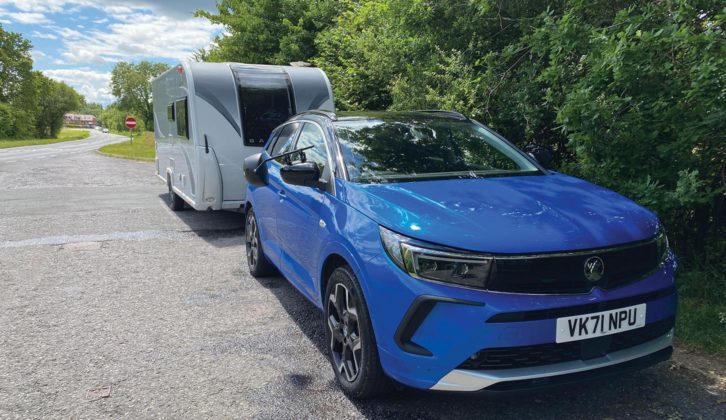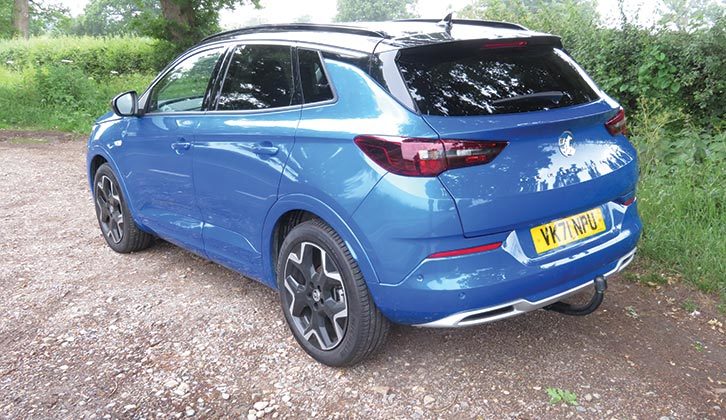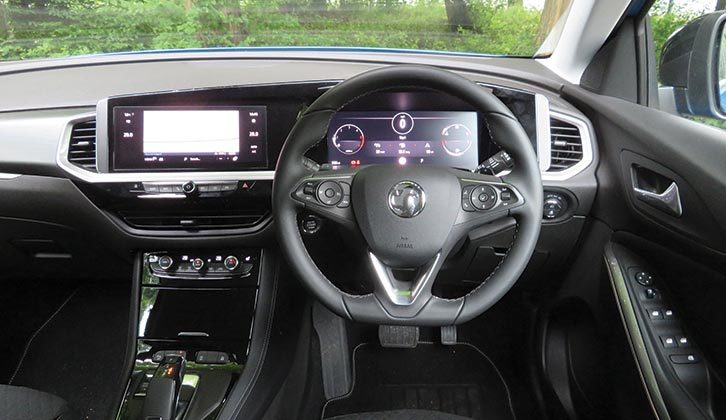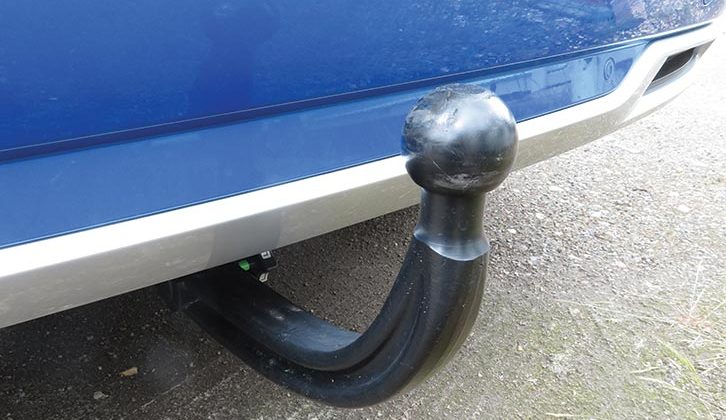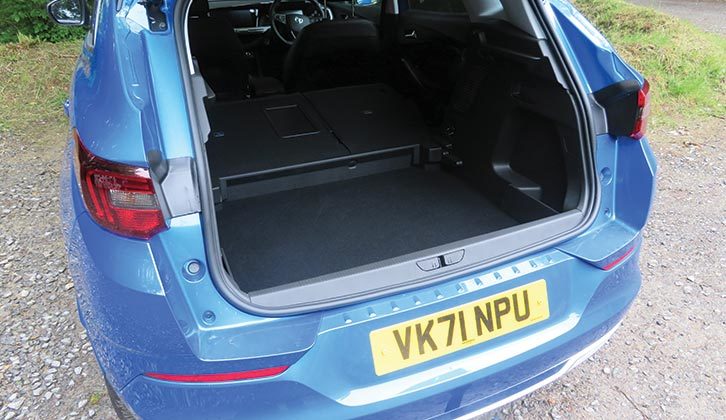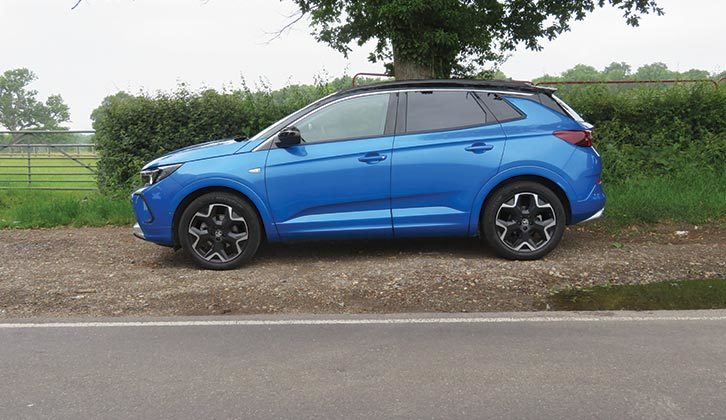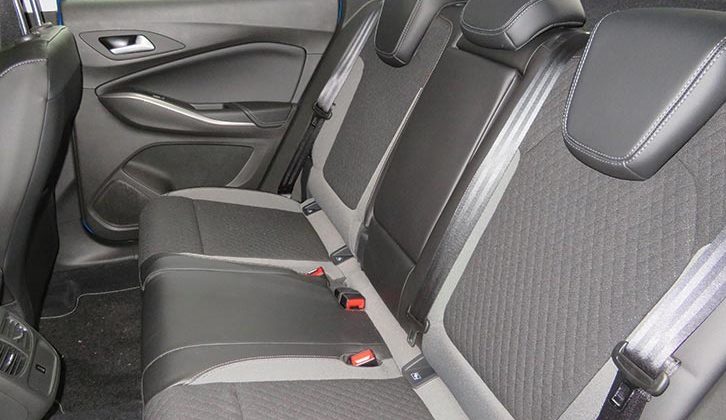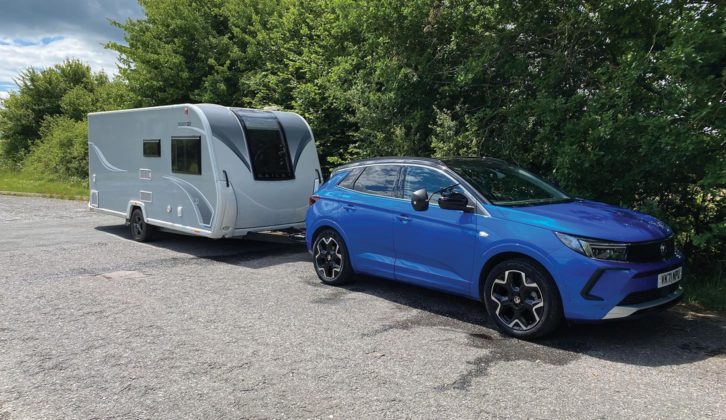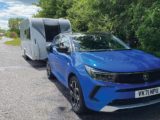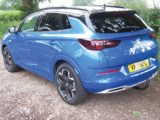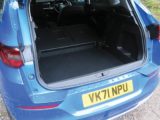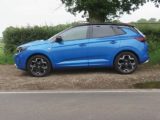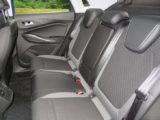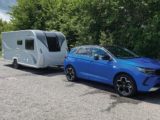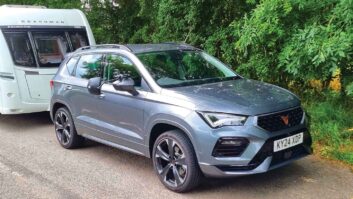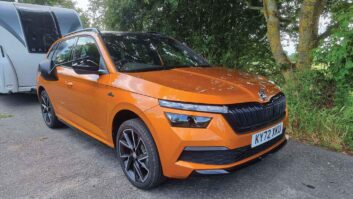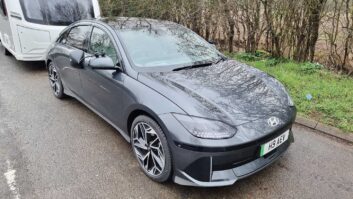The Vauxhall Grandland 1.5 Turbo D 130PS Ultimate Auto has been updated with new looks, matrix LED headlights and a dual-screen dashboard. More driver aids have been fitted, too.
The Grandland offers a choice of engines. Unlike some rivals, it is still available with a diesel engine, and that’s the model we’ve been driving. With 130hp, it’s not the most powerful diesel, but it promises excellent fuel economy, with an official combined figure of 53.3-54.3mpg. It’s matched to an eight-speed automatic gearbox.
What are we looking for?
The Vauxhall Grandland 1.5 Turbo D 130PS Ultimate Auto is a contender in a very competitive class. The Ford Kuga, Seat Ateca and Škoda Karoq all set a high bar. The Vauxhall is well equipped, especially in Ultimate specification, and the diesel is fuel-efficient. But is that enough?
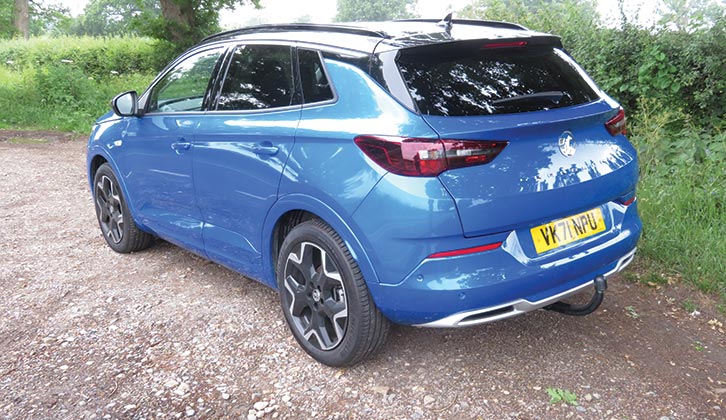
Towing ability
The Grandland comes in petrol, diesel and plug-in hybrid flavours. A good turbodiesel still makes a lot of sense for towing – 130hp is a modest power output, but the 221lb ft of torque should be enough to cope, so long as you don’t demand rapid acceleration.
The Vauxhall has a towing limit of just 1300kg, only 5kg higher than the 85% match figure of 1295kg. We matched it to our Bailey Discovery D4-4 with a MiRO of 1059kg.
The Grandland comfortably towed the Bailey up to speed, although with a caravan weighing closer to the 1300kg towing limit, you can expect quite steady acceleration.
Even pulling the lightweight Bailey, the Grandland is not quick as such, but the engine’s low-down pull and flexibility are well suited to towing. It held 60mph on motorway inclines with no sign of strain.
Hill starts are easy enough, certainly in the dry. The electronic parking brake held car and van steady, and released smoothly. There were some vibrations when pulling away, but no wheelspin on the 1-in-10 slope.
Wet weather might not have shown the Vauxhall in such a positive light, because this engine and gearbox combination is only available with front-wheel drive. In fact, when the Grandland X was facelifted to become the Grandland, the powerful four-wheel-drive plug-in hybrid model was discontinued in favour of a more efficient two-wheel-drive car.
That’s understandable from an emissions standpoint, but disappointing if you wish to tow in all weathers. Plenty of rivals, such as the Seat Ateca and the Škoda Karoq, are available as 4x4s for those who want or need the extra traction.
Four-wheel drive or not, the Grandland makes a stable tow car. It felt very secure at 60mph on the motorway, although vague steering doesn’t help if you do need to make a steering correction. It’s not immune to buffeting by crosswinds or the bow wave of an HGV, but in most circumstances, the Vauxhall feels secure and surefooted.
Arrive at your site and you’ll find the Grandland’s automatic gearbox makes it easy to manoeuvre at low speeds. However, the high boot line and thick rear pillars do compromise the view over your shoulder. It’s just as well there’s a reversing camera.
We’d be surprised if whoever decided on the location of the electrical socket has done much caravanning. It’s so far under the back bumper that for a moment or two, we wondered if Vauxhall had actually fitted the towbar but no electrics.
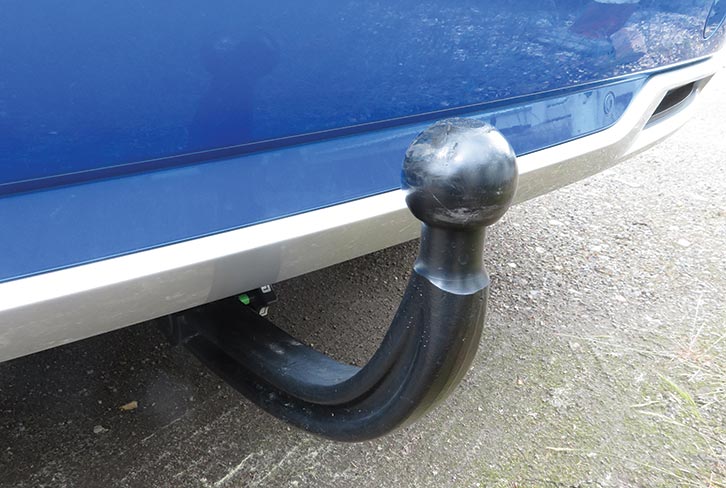
The Grandland is a good tow car, but the towing limit is low for a turbodiesel, and there are rivals with more pulling power.
Solo driving
It’s not the sportiest of SUVs, or the most comfortable, either. The Grandland drives reasonably well, but there’s clear daylight between the Vauxhall and the best vehicles in this competitive class.
The ride is lumpy and unsettled, but it does improve at motorway speeds. The big 19-inch alloys fitted to Ultimate spec cars do the suspension no favours – colleagues who have driven less pricey models with smaller wheels report that they do a better job of isolating you from lumps and bumps in the road. Among the Vauxhall’s rivals, the Škoda Karoq is more forgiving.
On country roads, the Grandland corners neatly enough, but numb steering means there’s not a lot of fun to be had. It takes a while to get used to steering which is unresponsive either side of straight-ahead but then sharpens up quite quickly.
A Mazda CX-5 (see what we thought of the updated model) or Seat Ateca steer more consistently and handle with more verve.
The Grandland is most at home on dual carriageways and motorways, but even then, there’s a lot of road noise in the cabin. On the plus side, the eight-speed auto is generally very smooth, and engine noise stays in the background unless you are accelerating hard.
Forward visibility is fine around town, but just as when reversing a caravan, the thick rear pillars are a pain when parking. Front and rear parking sensors and a rear-view camera make this foible less of an annoyance than it might be, however.
Space and practicality
Vauxhall also spruced up the cabin when it facelifted the Grandland’s exterior. Open the door and climb into the driver’s seat, and you’re greeted by two large screens.
Directly in front of you is the 12-inch digital instrument cluster, which can be configured to prioritise different types of information. To the left, the 10-inch touchscreen takes care of satellite navigation, music streaming and so on.
The graphics are reasonably crisp and clear, and shortcut buttons make navigation easier. We’re pleased to see separate physical controls for the air conditioning, which are a lot easier to use on the move.
You sit high, even with the seat on its lowest setting, and standard-fit lumbar adjustment will be welcomed by back-pain sufferers. There’s a good range of adjustment for both seat and wheel, although we found the seat cushion rather unyielding.
The dashboard is solidly put together, but although the cabin appears made to last, there’s a lot of hard plastics on show. This interior rather lacks the wow factor of cabins in rivals such as the Kia Sportage.
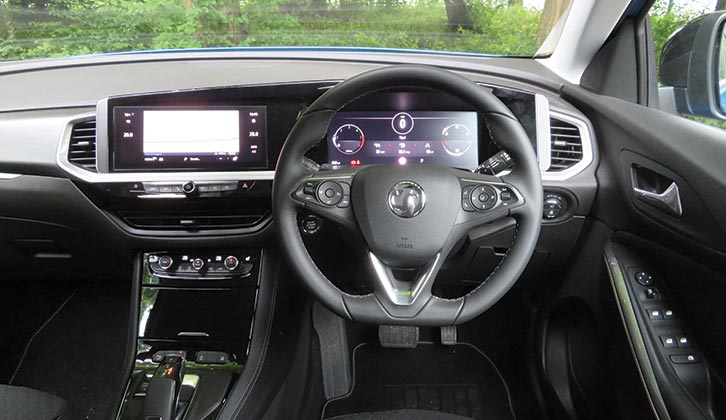
In the back of the car, there’s enough legroom for adults, but not exactly room to stretch out.
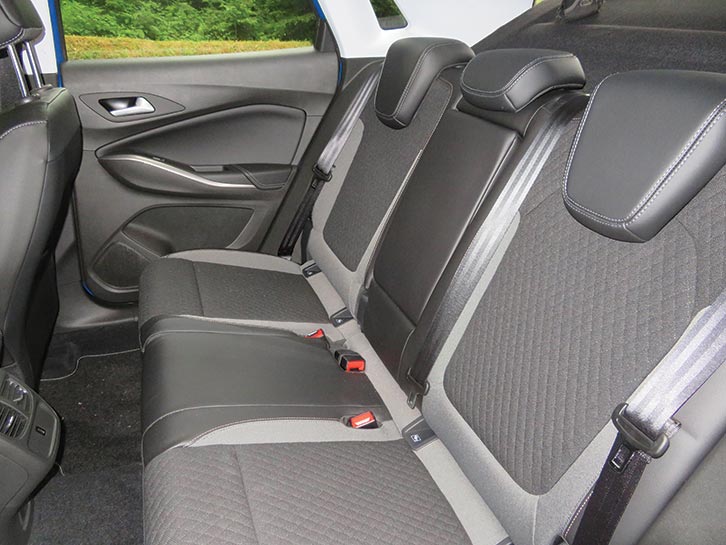
On the plus side, the floor is almost completely flat, handy if you need to fit three across the rear bench.
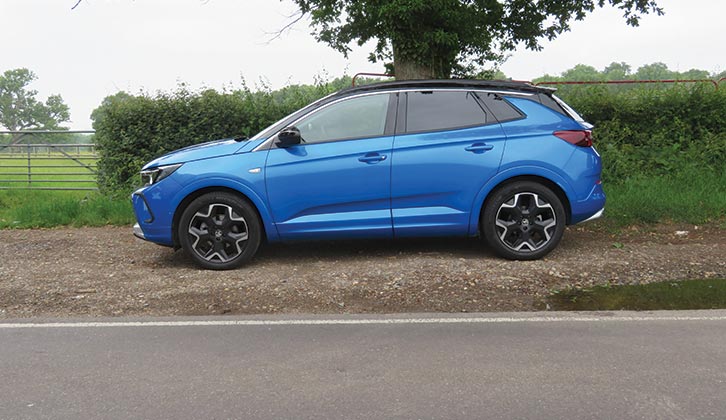
There are air vents between the front seats to keep rear-seat passengers comfortable, and a USB port and a 230V socket for charging phones and devices.
With a capacity of 514 litres, the boot is spacious, broadly in line with what you’d expect from an SUV of this size. The boot has a false floor, which can be moved to create one large space or left in the higher position for hidden storage. But even with the floor on the higher setting, there’s still a slight lip to load items over.
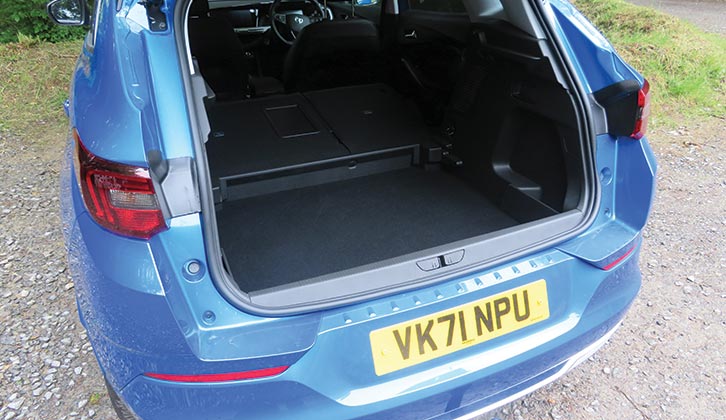
Levers on either side of the tailgate lower the back seats, which split and fold 60/40. With the seats lowered, there’s a competitive 1652 litres.
Buying and owning
As the name suggests, Ultimate is the most expensive version of the Grandland. The diesel auto model will set you back £35,130 if you pay the full price, although research by What Car? suggests that you should be able to pay around £33,679 after a bit of haggling.
The price drops to £29,220 if you choose the entry-level Design model instead, or £31,480 for a GS Line car.
If your budget stretches to the top-spec Ultimate, then dual-zone climate control, Alcantara upholstery, 19-inch alloy wheels, Advanced Park Assist (a self-parking feature), satellite navigation and wireless charging for compatible phones are included in the price.
Safety equipment is also generous, and the Grandland has a five-star rating from the experts at Euro NCAP.
According to the Grandland’s official combined figure, you can expect around 53.3-54.3mpg. We found 50mpg or better to be achievable on a long motorway run, and the Vauxhall returned an impressive 31.3mpg while towing the Bailey Discovery.
Perfect towing partner
With the Grandland’s 85% match figure at 1295kg, you can safely tow a Swift Sprite Alpine 4.
Verdict on the Vauxhall Grandland 1.5 Turbo D 130PS Ultimate Auto
The Grandland is by no means a bad car, but it’s hard to see what it does to nose ahead of its competition.
As a tow car, it’s stable and competent. The diesel has enough pulling power to handle a sensibly matched van, so long as you’re not in too much of a hurry.
The Grandland’s 1300kg maximum is low for a car of this size and weight. That doesn’t stop you towing a van weighing 85% of the car’s kerbweight, but if you are an experienced driver looking to tow something a little heavier, the limit is a frustration.
In everyday driving, the Grandland is beaten for fun by the likes of the Mazda CX-5 and for comfort by the Škoda Karoq. The 19-inch alloys don’t help. Inside the Vauxhall, there’s reasonable enough space for a family. The driver and front-seat passenger have plenty of room, and those people sitting in the back should be comfortable, unless they are very tall. However, it is a bit of a shame that the Grandland’s cabin isn’t better finished, given that the car costs more than £35,000.
Fuel economy is one the Grandland diesel’s strongest points. In our experience, it gets close to the official combined figure in everyday driving, and 31.3mpg while towing the Bailey is very frugal.
Go for a car in Ultimate spec and you get a long list of kit included in the price. If you like the look of the Grandland, and feel the same way after a test drive, we wouldn’t put you off. But for our money, there are better, more powerful SUVs for a similar outlay.
After some more towing vehicle inspiration? Then take a look at our best tow car round-up, where we share our pick of the top models on the market to suit all budgets.
The Vauxhall Grandland in detail
- Price: £35,130
- What Car? Target Price: £33,679
- Retained value after three years: 49%
- Kerbweight: 1523kg
- 85% of kerbweight: 1295kg
- Gross vehicle weight: 2000kg
- Max towing limit: 1300kg
- Gross train weight: 3300kg
- Towball limit: 70kg
- Price of towball and electrics: £722
- Boot size min/max: 514/1652 litres
- Payload: 477kg
- Test conditions: Dry
- Engine size: 1499cc
- Official combined economy: 53.3-54.3mpg
- Towing economy: 31.3mpg
- Power (hp)/rpm: 128/3750
- Torque (lb ft)/rpm: 221/1750
- CO2 emissions: 136-138g/km
- First year car tax: £230
- Second year car tax: £165
- Insurance group: 16E
Or you could try…
Skoda Karoq 2.0 TDI
Price: From £29,850
The Karoq is roomier and more comfortable than the Grandland, and tows very well.
Price: From £28,755
The Kuga drives and tows well, but you can no longer buy a new one with a diesel engine.
Used Kia Sportage 1.6 CRDi GT-Line
68-plate, 54,000 miles
Price: £18,599
A used Kia Sportage makes a very capable tow car at a sensible price.
Used VW Tiguan 2.0 TDI (150PS) SE Navigation DSG
18-plate, 70,000 miles Price: £16,985
Roomy, practical and stable, the Tiguan makes a fine used tow car.
If you’ve enjoyed reading this article, why not get the latest news, reviews and features delivered direct to your door or inbox every month. Take advantage of our brilliant Practical Caravan magazine SUBSCRIBERS’ OFFER and SIGN UP TO OUR NEWSLETTER for regular weekly updates on all things caravan related.
Technical Specifications
| Engine Size | 1499 cc |
| Kerbweight | 1523 kg |
| 85% KW | 1295 kg |
| Towball Limit | 70 kg |
| Maximum Towing Limit | 1300 kg |
| Power | 128 bhp |
| Torque | 221 lb ft |
| Offical MPG | 53.3-54.3 mpg |
| Towing MPG | 31.3 mpg |
| CO₂ | 136-138 g/km |
